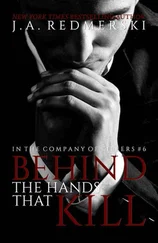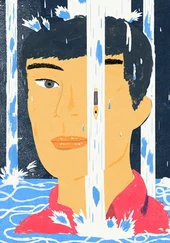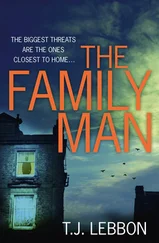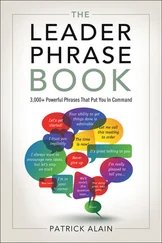“You shouldn’t bother his mother right now.” I tried to keep my voice steady and uninflected. It would be so easy to step wrong, I knew. What would it take to convince her that he was dead? And if I convinced her, then who would she think was pretending to be him? Didn’t this make her a victim twice over?
“Is the reason you’re being so cruel to me because he left you for me?” I heard Samantha reaching to make sense out of what she was hearing.
“I’m just telling you what I know. I don’t know what more I can do.”
“You can call me if you hear from him.”
In an exercise for a psychology class at John Jay, we students were paired, and one person was instructed to say, “No, you can’t,” to the partner. The partner was instructed to reply, “Yes, I can.” This was to go on indefinitely. I remember everyone getting ready, then the professor announced, “You may start… now .”
Amabile, my partner, faced me in a chair and said, “No, you can’t.” I said right back, “Yes, I can.” He smiled and said, “No, you can’t,” the inflection slightly firmer. “Yes,” I corrected him, “I can.” We did this back and forth a few more times, until the smiles left our faces. We were shocked at how quickly the simple phrases enraged us. I could feel my face turn red. He wasn’t listening to me. Amabile’s voice rose. I was aware that something similar was going on elsewhere in the classroom.
This was how I felt talking with Samantha. She didn’t listen. I made no impression on her whatsoever.
I took Leland’s advice and spent the next day in the library at John Jay on the MEDLINE database. I read articles by Laurence Tancredi, MD, on the ways in which brain structure and functioning are profoundly affected by hormones, drugs, genetic abnormalities, injuries, and traumatic experiences. Bad judgment, he argued, could be the result of physiological abnormalities. This was a theory I wanted to include in my thesis, his idea that we are “hardwired” to act as we do.
I was mostly looking at a phenomenon called mirror cells. The neuroscientist V. S. Ramachandran had said, “Mirror neurons will do for psychology what DNA did for biology.” Mirror cells were discovered in monkeys in 1992. A team of Italian scientists noticed that the same neurons fired when a monkey reached for an object as when the monkey saw another monkey reaching for an object. Ramachandran, among other scientists, believe that mirror cells are the building blocks for a number of essential human skills — imitation, the ability to intuit what another person is thinking, and most important, empathy. Ramachandran’s theory is that autism is the result of broken mirror cells. I was trying to find enough data to confirm my own theory. Sociopaths also suffer from broken mirror-neuron systems.
The sole message on my machine when I got home was from Billie, calling to say she had found an animal sanctuary with a short waiting list just outside New Milford, Connecticut. She asked if I’d like to drive up together to check it out for Cloud.
She picked me up in her old Volvo, the interior as immaculate as the day she showed up on Staten Island for the temperament test. I offered money for gas, but she said she had filled the tank, and it wasn’t necessary. It was a clear day for the ninety-minute drive to Connecticut.
Billie said she’d found the place through a friend who worked with Bad Rap out in Oakland, California. The friend had gone West after years in the rescue network in the Northeast. She had started For Pitties’ Sake, the place we were headed for, though they did not turn away other breeds if they needed help.
“They’ve never had a Great Pyrenees there,” Billie said.
That was all the dog talk for a while. As though we had agreed to it, we stayed quiet until the exit for Rye, no traffic to battle.
“My mother used to take us to Playland,” Billie said. “Couple minutes from here. There was a ride called the Steeple Chase, a carousel with horses that looked like they were stampeding in terror. There were four horses abreast, maybe fifty horses altogether. And the thing went, like, sixty miles an hour. Amazingly, no one was ever killed on it, but a seven-year-old boy died of blunt force trauma to the head on Ye Old Mill ride, tame and slow.”
Billie tuned her Sirius radio to Coffee House. Easy listening with an indie vibe.
“My grandmother has a place here,” Billie said, when we passed through Greenwich. “That’s where I rode the real horses.”
“Nice,” I managed.
When we took the exit toward New Milford, the landscape, for a few miles, was more scenic — nicer trees. Where I expected to see cattle grazing, we drove past small businesses and shopping centers. Billie asked if I wanted to stop for coffee or just keep going. I was glad she had asked, and we stopped for coffee-to-go from a diner.
Back in the car, we had two cups of hot coffee, but only one drink holder. I amused myself picturing the power play of who would claim the sole cup holder, though the driver usually gets it if there is only one. As though reading my mind, Billie pulled it a little farther out, and I saw that it did, in fact, hold two.
We turned off the main drag onto a barely marked dirt road and followed it for about a quarter of a mile until Billie stopped the car in front of a red-painted, raised ranch house. No sign announced the place, but I saw that the grounds went on for acres and acres, with an agility course set up to one side of the house, and a frozen-over creek on the other. Before we could ring the doorbell, the door opened, and a young man with dark hair and a mustache greeted us.
“The director made a dog-food run, but I can show you around.” He took us downstairs first, where each room held two or three wire crates the size of studio apartments. A dog was in each, with piles of fleece blankets, a bowl of water, and rawhide bones and toys.
“The dogs live inside the house?” I asked, used to the foul conditions of the shelter.
“They each have their own crate in the house, and there are large areas for socialization, where they can run free upstairs and play together. Outdoors we have the agility course, and tie-outs when the weather is better.
“The idea here is to de-stress the dogs, give them exercise, get them veterinary care if they need it, and provide obedience training if that is what they need, whatever will help them get their ‘forever homes,’ ” Alfredo said. “Upstairs it’s the same — we can have thirty dogs here at a time.”
“How do you pay for this?” I asked.
“We get donations; the woman who started it is a good fund-raiser. There are angels, people who don’t ask for recognition for the money they give us — a lot of money. I came here from Guatemala to work as a landscape gardener. I was hired to maintain the yard, and one day the director asked me for help walking her six unruly dogs. When I took them all out on their leashes, they instantly stopped squabbling and walked perfectly as a group. Not one of them barked. They didn’t pull to chase other dogs in the park. I didn’t have to raise my voice to them.”
“But what about a dog you can’t find a home for? My dog would be here for life.”
“Her dog, the Pyrenees, was ruled a ‘dangerous dog,’ ” Billie said.
Alfredo led us to what was once the garage. But no cars were there, and it was heated the same as the rest of the house. An industrial washer and dryer were at one end, and shelves were filled with grooming equipment and hooks for dozens of leashes. An even larger wire crate was set up on a platform a foot or so above the garage floor, so that a crated dog could see out the window. Inside the extra-large crate — filled, as the others were, with blankets and toys — was a German shepherd, reclining comfortably.
Читать дальше
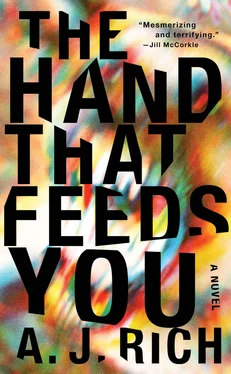
![Корнелл Вулрич - Eyes That Watch You [= The Case of the Talking Eyes]](/books/32103/kornell-vulrich-eyes-that-watch-you-the-case-of-thumb.webp)
